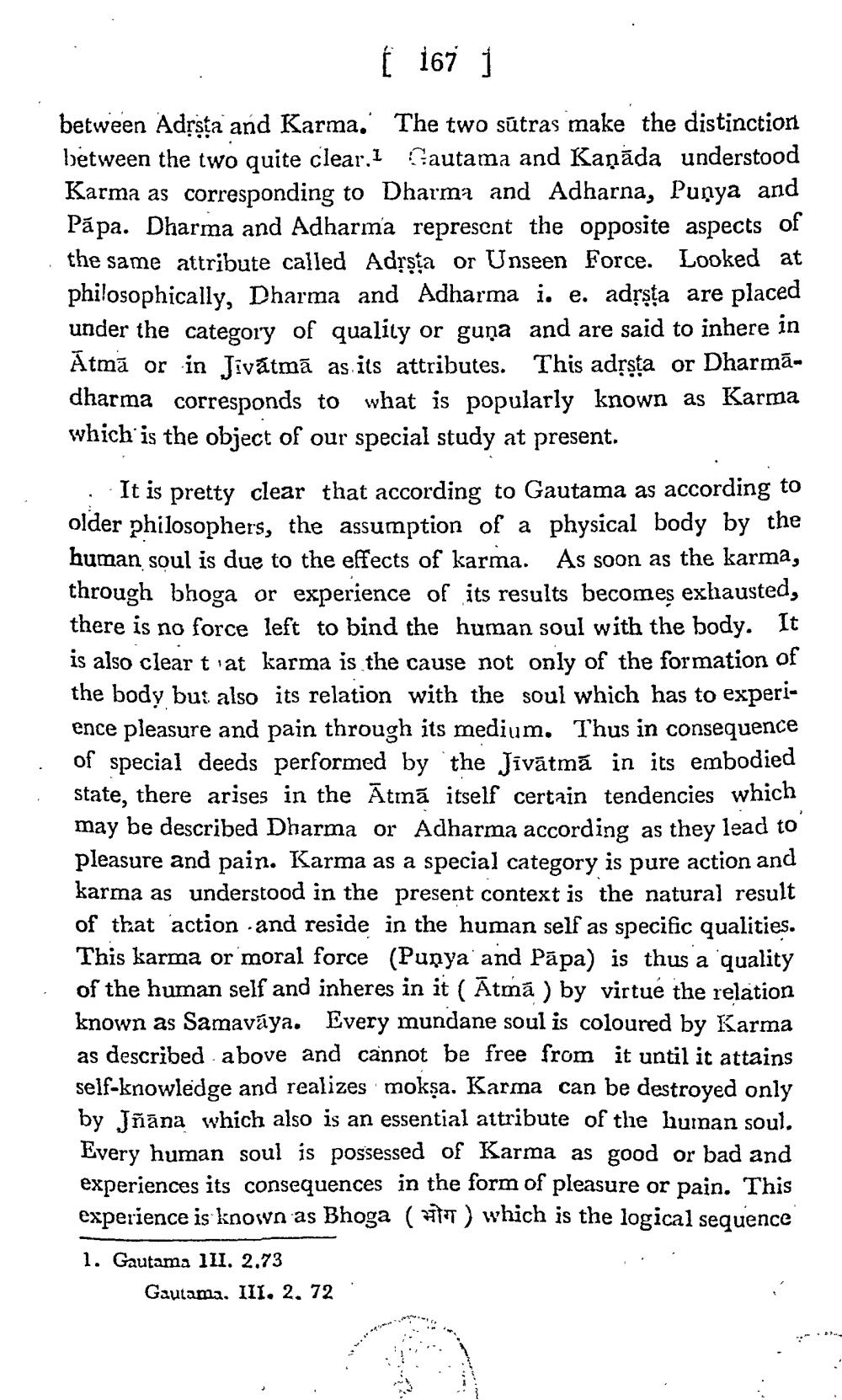________________
[ 167 1
between Adľsta and Karma.' The two sūtras make the distinction between the two quite clear.1 Gautama and Kaņāda understood Karma as corresponding to Dharma and Adharna, Puņya and Pápa. Dharma and Adharma represent the opposite aspects of the same attribute called Adrsta or Unseen Force. Looked at philosophically, Dharma and Adharma i. e. adȚsta are placed under the category of quality or guna and are said to inhere in Atmā or in Jivātmā as its attributes. This adssta or Dharmādharma corresponds to what is popularly known as Karma which is the object of our special study at present.
It is pretty clear that according to Gautama as according to older philosophers, the assumption of a physical body by the human soul is due to the effects of karma. As soon as the karma, through bhoga or experience of its results becomes exhausted, there is no force left to bind the human soul with the body. It is also clear t at karma is the cause not only of the formation of the body but also its relation with the soul which has to experience pleasure and pain through its medium. Thus in consequence of special deeds performed by the Jivātmă in its embodied state, there arises in the Ātmā itself certain tendencies which may be described Dharma or Adharma according as they lead to pleasure and pain. Karma as a special category is pure action and karma as understood in the present context is the natural result of that action and reside in the human self as specific qualities. This karma or moral force (Punya and Pāpa) is thus a quality of the human self and inheres in it ( Ātmā ) by virtue the relation known as Samaváya. Every mundane soul is coloured by Karma as described above and cannot be free from it until it attains self-knowledge and realizes mokşa. Karma can be destroyed only by Jñāna which also is an essential attribute of the human soul. Every human soul is possessed of Karma as good or bad and experiences its consequences in the form of pleasure or pain. This experience is known as Bhoga ( T ) which is the logical sequence
1. Gautama 1II. 2.73
Gautama. III. 2. 72.




